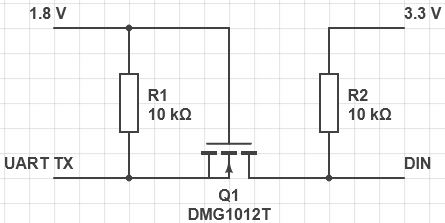Other Parts Discussed in Thread: LSF0101, 2N7001T, TXU0101, SN74LVC1G07
Hello E2E Experts,
Good day.
Please share the internal structure of the TCA5405 to understand what should be the value of the pull-down resistor in the attached push-pull level conversion logic. The datasheet is very stingy with details.
Thank you in advance.
Regards,
CSC


